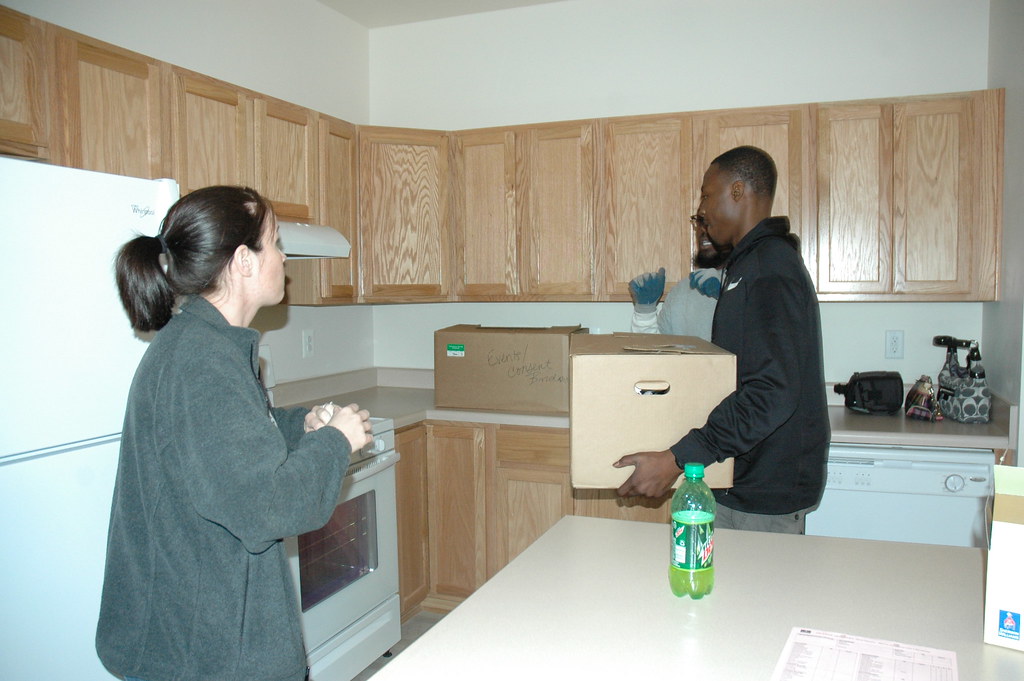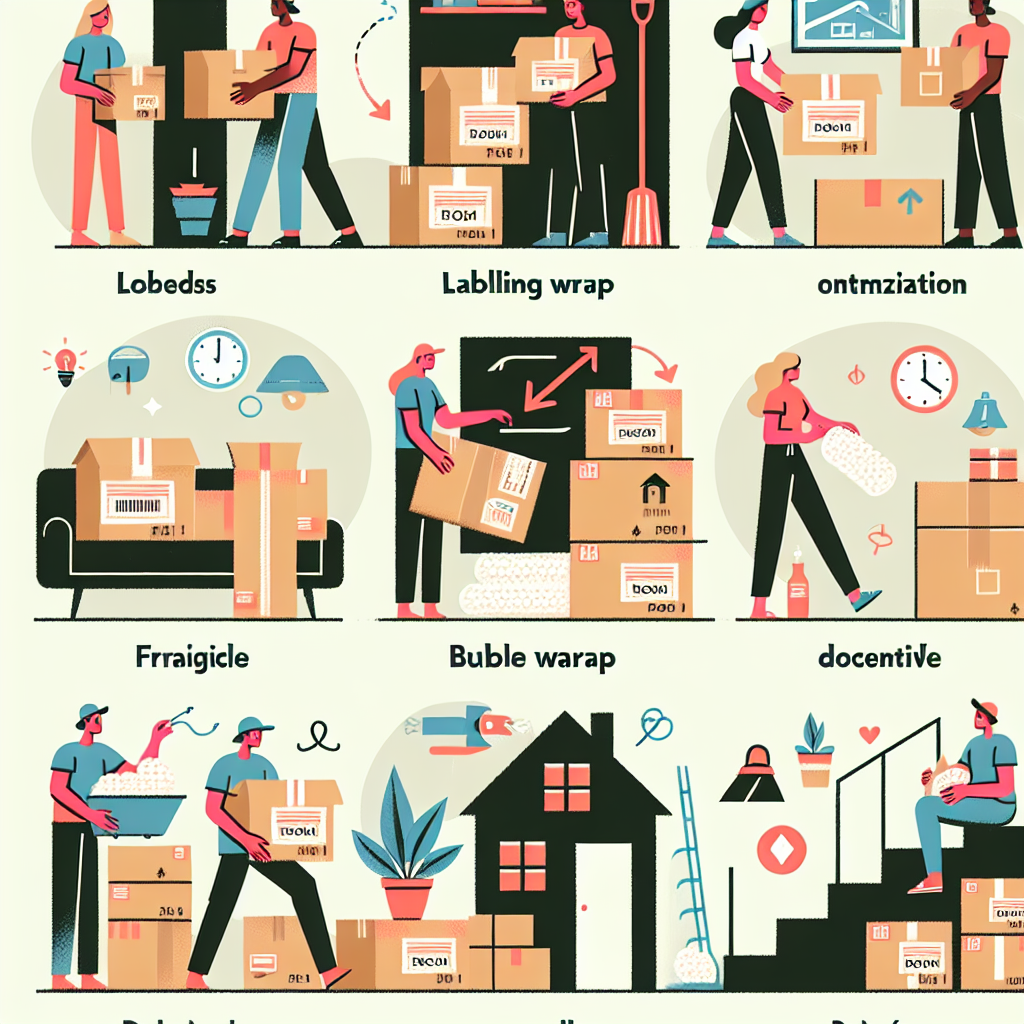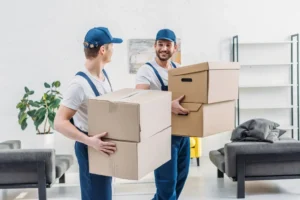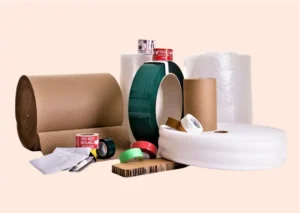Table of Contents

Moving to a new home can be thrilling, but the thought of packing can dampen anyone’s spirit. Fear not, because with the right tips and tricks, packing doesn’t have to be a nightmare. Whether you’re a first-time mover or a seasoned pro, I’m here to guide you through the process with practical, easy-to-follow advice that will make your move as smooth as possible.
Remember, the key to a successful move is preparation. With a bit of organization and the right materials, you’ll be ready to tackle packing with confidence. So let’s dive in and get you on your way to a stress-free move!
Key Takeaways
-
Choose the right packing materials to protect your belongings.
-
Declutter before packing to make your move more efficient.
-
Learn how to pack lamps and shades to prevent damage.
-
Wrap kitchenware carefully to avoid breakages.
-
Label boxes clearly for easy unpacking in your new home.
Start Off Right: Packing Essentials
Before you start throwing things into boxes, let’s talk about the essentials you’ll need. High-quality packing materials are a mover’s best friend. They ensure that your treasured possessions arrive at your new home safe and sound. Here’s what you should have on hand:
Must-Have Packing Materials
First things first, gather your packing materials. You’ll need sturdy boxes in various sizes, packing tape, bubble wrap, packing paper, and permanent markers. Don’t skimp on quality here—cheap materials can lead to broken items and unnecessary stress.
5 Steps to Choosing the Right Boxes
Boxes are the foundation of packing, so choosing the right ones is crucial. Consider the size and strength of the boxes for different items. Heavy items like books need small, sturdy boxes, while lighter items can go into larger ones. Here’s how to pick:
-
Assess the items you have and categorize them by weight and fragility.
-
Choose small boxes for heavy items to make them easier to carry.
-
Opt for medium-sized boxes for most of your belongings.
-
Reserve large boxes for light, bulky items like pillows and linens.
-
Consider specialty boxes for items like TVs or artwork.
Now that we have the essentials covered, let’s tackle the first big task: decluttering.
Declutter: Less is More
Decluttering before you move not only saves you time and money but also gives you a fresh start in your new place. Sort through your belongings and decide what to keep, sell, donate, or toss. Remember, the less you have to pack, the easier your move will be.
Separate, Sell, Donate: How to Downsize Effectively
Start by creating three categories: keep, sell, and donate. Be ruthless in your decision-making—if you haven’t used something in over a year, it’s time to say goodbye. Selling items can put some extra cash in your pocket, while donating can help those in need.

Tackling the “Maybe” Pile: Quick Decision Tips
For those items you’re on the fence about, ask yourself if they serve a purpose or bring you joy. If not, it’s time to part ways. You’ll appreciate the lighter load when it’s time to unpack in your new home.
After you’ve pared down your possessions, it’s time to focus on protecting those items that will make the journey to your new home. Glassware and plates require special attention to prevent chips and breaks during transport. It’s not just about wrapping them up; it’s about ensuring they’re secure enough to withstand a bit of jostling.
Wrap It Up: Safeguarding Glassware and Plates
When it comes to glassware and plates, bubble wrap is your best defense. Wrap each piece individually, and don’t be stingy with the wrap. For plates, stack them vertically like records in a box—it’s actually safer than stacking them flat. And always, always fill any gaps in the box with crumpled packing paper to prevent movement.
A Handy Guide for Packing Kitchen Appliances
Kitchen appliances can be tricky. If you’ve kept their original boxes, that’s perfect. If not, you’ll need sturdy boxes and plenty of padding. Wrap each appliance in bubble wrap or a towel, and secure the wrapping with tape. Fill any empty space in the box with crumpled paper to avoid shifting. Remember to label these boxes as ‘fragile’ to ensure careful handling.
Securing Cutlery and Utensils Without the Hassle
For cutlery and utensils, the goal is to prevent scratches and reduce noise. Sort your cutlery into sets, wrap each set in a dish towel, and then in bubble wrap. Secure with a rubber band or tape. For utensils, consider using old oven mitts or pot holders to provide padding, and then place them in a box or plastic bin.
Once you’ve packed your kitchenware safely, it’s time to focus on labeling, which can drastically reduce your unpacking time and stress levels.

Labeling: The Organization Game-Changer
Labeling isn’t just about slapping a sticky note on a box. It’s a systematic approach to keeping track of your belongings. Detailed labels can direct you and your movers to place boxes in the correct rooms, making unpacking a breeze.
Color Coding for Quick Identification
Use a color-coding system with different colored stickers or tape for each room. For example, blue for the bathroom, red for the kitchen, and so on. This visual system will help everyone know at a glance where each box belongs.
Detailing Contents: A Descriptive Approach
On each box, list the main items inside and any special handling instructions. Phrases like “FRAGILE – Glassware” or “HEAVY – Books” are incredibly helpful. If you’re using movers, this will also alert them to handle certain boxes with extra care.
Now that you’re a labeling pro, let’s move on to the actual packing techniques that will save you space and headaches.
The Power of Proper Packing
Proper packing isn’t just about getting everything into boxes. It’s about packing smartly to protect your items, maximize space, and make unpacking simpler.
When packing, heavier items should go at the bottom of the box, with lighter items on top. This keeps the boxes from becoming top-heavy and reduces the risk of tipping and damage. And remember, if a box feels too heavy, it probably is. It’s better to use an extra box than to risk a break or injury.
For clothing, consider vacuum-sealed bags. They can drastically reduce the amount of space clothes take up, making them easier to transport. Plus, they protect against water damage and keep your clothes fresh and clean.
-
Start with heavier items at the bottom of the box.
-
Use clothing and linens as padding around fragile items.
-
Fill empty spaces with crumpled packing paper or towels.
-
Avoid overpacking boxes to prevent them from becoming too heavy.
Maximizing Space: Clever Stacking Strategies
When loading the moving truck, think like a game of Tetris. Stack boxes from heaviest to lightest, ensuring no gaps in between. This will prevent shifting and crushing during the move. Also, place the most essential items last, so they’re the first you unload.
Seal and Protect: The Art of Wrapping and Taping
Wrapping and taping aren’t just about closing up boxes. They’re about creating a protective seal that guards against dust, moisture, and insects. Use a couple of strips of packing tape to seal the bottom and top seams, then make a couple of wraps all the way around the box’s top and bottom edges. This reinforces the box and keeps it from bursting open under the weight.
With your boxes sealed and stacked, you’re almost ready for moving day. But before the truck arrives, there are a few more tips to ensure your move goes off without a hitch.

Moving Day: Easy Loading and Unloading
Moving day can be chaotic, but with a plan in place, you’ll be able to navigate it with ease. Have a clear path through your home to make moving boxes out faster and safer. Keep your toolbox handy for last-minute disassembly and reassembly of furniture.
Arranging Your Packed Boxes in the Moving Truck
When loading the truck, start with the largest and heaviest items first. This includes furniture and appliances. Once those are in place, start filling in with boxes, using the heaviest at the bottom. Straps or bungee cords can be a lifesaver to keep everything in place during transit.
Quick Tip: Essential Items to Pack Last and Unload First
There are certain essentials you’ll need access to right away at your new place. Pack a box or suitcase with toiletries, a change of clothes, medications, important documents, and chargers. Label this as your “Open First” box and make sure it’s the last thing loaded onto the truck.
After the hustle and bustle of moving day, you’ve finally arrived at your new space. The boxes are piled high, and while it might look daunting, this is where the real transformation begins. Unpacking might seem like the last leg of a marathon, but with the right approach, you can cross the finish line with ease and start enjoying your new home.
Settling into Your New Space
Unpacking is more than just taking items out of boxes—it’s about setting the stage for your life in your new home. Approach this process with a strategy, and soon, the chaos will turn into comfort. Start with the essentials, like your “Open First” box, and then move room by room to stay organized.
Efficient Unpacking: Room by Room
To keep from feeling overwhelmed, focus on one room at a time, starting with the kitchen or the bathroom—places you’ll need to use early on. Check the labels on your boxes (remember all that labeling you did?) to quickly find what you need for each room. As you unpack, break down boxes and dispose of packing materials to keep your space clear and manageable.
Turning a House into a Home: Final Touches Post-Move
Once the essentials are unpacked, it’s time for the final touches. Hang curtains, place rugs, and arrange your furniture to your liking. Adding personal items like photos and decorations early on can help your new place feel like home. And don’t forget to celebrate your successful move with a relaxing evening or a small gathering with friends and family.
Frequently Asked Questions
Moving brings up a lot of questions, especially when it comes to packing specific items. Let’s address some of the most common concerns to help you pack with confidence.

How do I pack lamps for moving without breaking them?
For lamps, remove the shade and bulb, wrap the base in bubble wrap, and place it in a box. The shade should be wrapped separately with packing paper and placed in a box where it won’t get crushed. For the bulb, consider carrying it with you to avoid damage.
What is the best way to transport plates and glasses?
Plates should be packed vertically in small to medium boxes lined with crumpled packing paper. Wrap each plate in bubble wrap and cushion them with more paper. Glasses should be wrapped individually with packing paper tucked into the glass, then wrapped in bubble wrap, and placed in a box with dividers if possible.
Can I pack and move my kitchen appliances in their original boxes?
Yes, if you still have them, original boxes are ideal for moving kitchen appliances because they’re designed to fit perfectly. If you don’t have them, use sturdy boxes with plenty of padding and secure the appliances with packing tape.
What should I do with leftover packing materials?
Leftover packing materials can be recycled, sold, or donated. Cardboard boxes can be broken down and taken to a recycling center, while bubble wrap and packing peanuts can be kept for future use or given to friends or local businesses that may need them.
How can I make the unpacking process less overwhelming?
To make unpacking less overwhelming, start by placing boxes in their corresponding rooms based on the labels. Tackle one room at a time, starting with the most essential spaces. Take breaks when needed, and don’t rush—it’s important to set your new home up in a way that feels right to you.
As you settle into your new home, remember that moving is a journey, not just a one-day event. Take your time to arrange things to your liking, and before you know it, you’ll be fully settled in. If you need any help along the way, don’t hesitate to Contact Us. We’re here to assist with any packing, moving, or unpacking questions you may have. Happy moving!
When it comes to packing your kitchen, it’s important to take extra care with fragile items. Wrap glasses and dishes individually, and fill any gaps in the boxes with packing paper or bubble wrap. For pots and pans, nesting them together can save space, but make sure to protect the surfaces with a layer of cloth or paper in between. Don’t forget to label your boxes clearly, so you know exactly what’s inside and can handle them with care!



